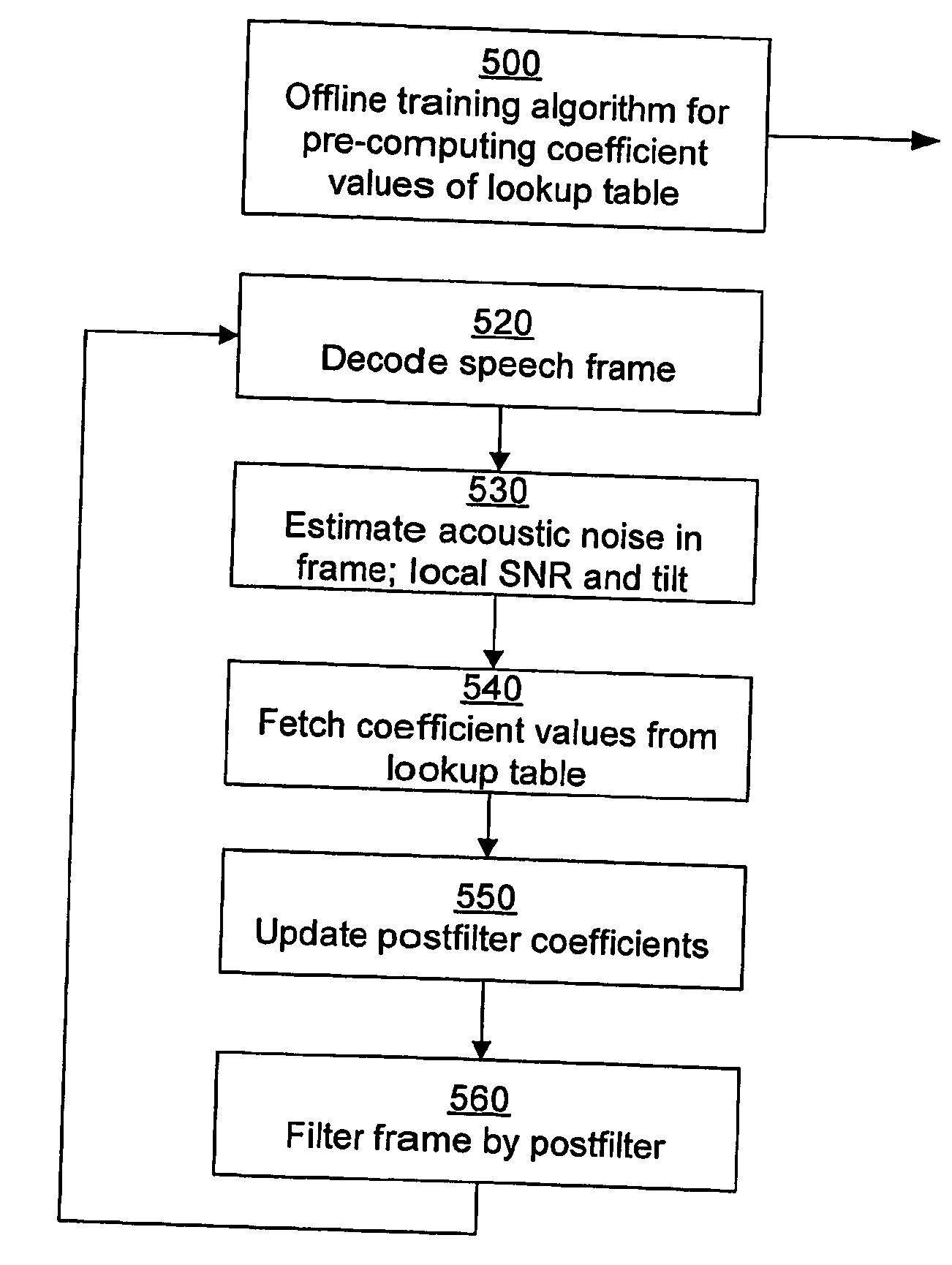Noise-dependent postfiltering
a postfiltering and noise-dependent technology, applied in the field of speech coding, speech enhancement and mobile telecommunications, can solve the problems of quantization noise, distortion of speech signal, acoustic noise, etc., and achieve the effect of reducing the effect of acoustic background nois
- Summary
- Abstract
- Description
- Claims
- Application Information
AI Technical Summary
Benefits of technology
Problems solved by technology
Method used
Image
Examples
Embodiment Construction
[0035] A telecommunication system in which the present invention may be applied will first be described with reference to FIGS. 1 and 2. Then, the particulars of the noise-dependent postfilter according to the invention will be described with reference to the remaining FIGS.
[0036] In the system of FIG. 1, audio data may be communicated between various units 100, 100′, 122 and 132 by means of different networks 110, 120 and 130. The audio data may represent speech, music or any other type of acoustic information. Within the context of the present invention, such audio data will represent speech. Hence, speech may be communicated from a user of a stationary telephone 132 through a public switched telephone network (PSTN) 130 and a mobile telecommunications network 110, via a base station 104 or 104′ thereof across a wireless communication link 102 or 102′ to a mobile terminal 100 or 100′, and vice versa. The mobile terminals 100, 100′ may be any commercially available devices for any...
PUM
 Login to View More
Login to View More Abstract
Description
Claims
Application Information
 Login to View More
Login to View More - R&D
- Intellectual Property
- Life Sciences
- Materials
- Tech Scout
- Unparalleled Data Quality
- Higher Quality Content
- 60% Fewer Hallucinations
Browse by: Latest US Patents, China's latest patents, Technical Efficacy Thesaurus, Application Domain, Technology Topic, Popular Technical Reports.
© 2025 PatSnap. All rights reserved.Legal|Privacy policy|Modern Slavery Act Transparency Statement|Sitemap|About US| Contact US: help@patsnap.com



